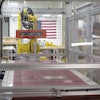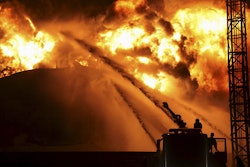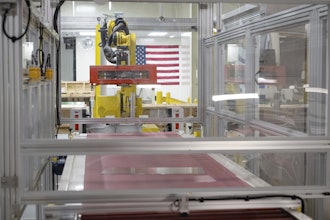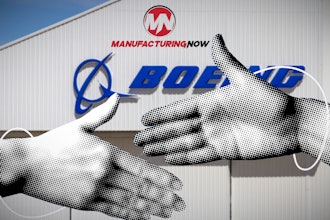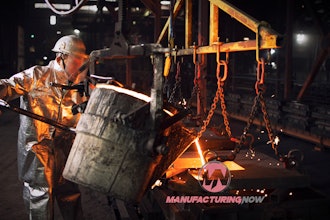This article originally appeared in the January/February 2014 print edition of IMPO.
Each year, the Occupational Safety & Health Administration (OSHA) releases a list of the top 10 most frequently cited standards violations. The list for fiscal year 2013 is almost identical to the previous year, highlighting the need for greater attention to safety on the plant floor.
Improving plant safety practices protects workers, eliminates fines, helps to maintain company image and increases worker retention. Experts in the field provide up-to-date advice on ensuring safe working conditions in your facility.
Following are the top ten most cited OSHA standards violations, in order of their frequency, for fiscal year 2013.
1. Fall Protection
Fall protection tops the list again. Anytime a person is working at an elevated height, they are at potential risk of falling.
“One of the best measures companies can take to help protect their workers is to install safety gates at openings on elevated levels of industrial steel work platforms and mezzanines,” says Hue Schlegel, director of marketing at Wildeck, a manufacturer of protective guarding products.
Barriers such as pivot safety gates, overhead safety gates, and double-drop safety gates provide continuous protection at open areas on elevated work platforms.
“The key is to do a thorough audit of all elevated levels to determine if there are any safety deficiencies or infrastructure in need of upgrades,” says Schlegel. Reputable manufacturers of elevated work platforms can assist you in evaluating your facilities.
2. Hazard Communication
Employers find themselves struggling to create a compliant HazCom program. Most frequently, they lack written programs, fail to include enough information in written programs or don’t provide proper training.
“The first step is ensuring that your HazCom plan is fluid. This means that as internal products change, so should your written HazCom plan,” says Heather Marenda, Compliance Service Engagement Member at Brady Corporation, an international safety and security company.
The second key step is to properly train employees. Many companies train employees with canned presentations that don’t address the job-specific hazards they encounter, which leaves room for mistakes and injury.
Throughout the transition to the new OSHA HazCom standards, employers must continue to train their employees on both systems until they have fully converted.
3. Scaffolding
OSHA statistics show that each year, more than 4,500 workers are injured in scaffolding-related accidents, and more than 60 accidents a year are fatal.
Under OSHA standards, all scaffolds are required to have a 10-foot trigger height for fall protection. There is also a 36-inch minimum guardrail height where fall arrest systems are the primary fall protection, and a 38-inch minimum guardrail height where a guardrail is the primary fall protection.
This standard also outlines the responsibilities of the individual responsible for scaffolding safety. These responsibilities include scaffolding and component inspection prior to each work shift and training erectors and dismantlers to recognize work hazards.
4. Respiratory Protection
A respirator is required to protect employees from breathing contaminated or oxygen-deficient air when effective engineering controls are not feasible. It is essential that the correct respirator is chosen based on the environment in which the employee is working. Factors that must be taken into consideration are particulate matter, vapors and oxygen-deficiency.
All respirators must be certified by The National Institute for Occupational Safety and Health (NIOSH). Certified respirators will be labeled as such.
The employer must provide a medical evaluation to determine the employee’s ability to use a respirator before the employee is fit tested or required to use the device. The employer is also required to provide for the cleaning and disinfecting, storage, inspection and repair of respirators.
5. Electrical, Wiring Methods, Components and Equipment
The number of violations in this category doubled from 2012, emphasizing the need to reevaluate electrical safety. This specific regulation is quite broad and covers many topics including the use of conductors, cable trays, insulators, enclosures, switches, wet locations and flexible cords and cables.
To comply with this standard and to keep your workers safe, enclosures, raceways, cable trays, fittings and other non-conductors made from metal used for grounding must be properly bonded to be able to handle potential fault currents.
Wiring systems should not be installed in ducts where known fire hazards are stored, including dust, loose stock or flammable vapors.
6. Powered Industrial Trucks
Powered industrial trucks, also known as forklifts or lift trucks, come in many variations, and each presents different operating hazards. According to OSHA, the most common lift truck accidents include being struck by falling loads, driving lift trucks off loading docks, being struck by a lift truck, or falling while on elevated pallets and tines.
Employers must ensure that each powered industrial truck operator is competent to operate the vehicle safely, as demonstrated by the successful completion of the training and evaluation as specified by OSHA.
Daily, pre-shift inspection of powered industrial trucks is required by OSHA standards.
7. Ladders
According to the Bureau of Labor Statistics, 20 percent of fatal falls on the job are from ladders. There are many types of ladders, and each presents their own risks.
Ladder accidents are usually caused by a lack of adequate training on ladder safety, poor condition of the ladder, improper ladder selection and incorrect ladder positioning.
While on a ladder, employees should keep tools in a tool belt to keep their hands free for climbing. Heavy and bulky objects should only be brought up after the climber has reached the top, and signs or barricades should be used to warn workers below of the potential for falling objects.
8. Control of Hazardous Energy (Lockout/Tagout)
The lack of proper training is the main reason lockout/tagout (LOTO) continues to appear on OSHA’s top ten list. Other key mistakes include overlooking key control procedures, using stock safety padlocks, and failing to perform annual reviews of their procedures.
“Each safety padlock in a facility should be registered to the facility and uniquely identifiable,” says Waylen Pape, sales manager for Master Lock Company Security & Safety Solutions. “Buying ‘stock’ safety padlocks may not be sufficient to provide a high level of safety in your facility.”
Experts at Master Lock recommend implementing a “One employee, one lock, one key” concept. Assuring that each employee has their own, assigned lock and key can help prevent accidental removal of locks.
9. Electrical Systems Design
Electrical equipment is necessary for all jobs, and many maintenance personnel are forced to make do with what they have on hand to get the job done. Unfortunately, the end result does not always meet code and can create a dangerous work environment for employees.
“Historically, emphasis has not been placed on regular maintenance and training activities; however, this trend seems to be changing,” says Jon Semancik, Product Manager at Ericson Manufacturing, a company focused on safe lighting, power and engineering solutions.
Semancik recommends that each facility have at least one dedicated expert on facility safety compliance, and that this person is responsible for trainings on proper electrical maintenance practices. Successful programs also provide the resources, training and equipment to get the job done properly.
10. Machinery and Machine Guarding
Common machine guarding mistakes include improper maintenance, the intentional removal of the safeguarding devices to increase production and the lack of a formal risk assessment.
“Some of the main mistakes manufacturers make is assuming that implementing a good injury prevention program is too expensive or too complicated,” says Eric Esson, National Sales & Marketing Manager at Frommelt Safety Products, a company focused on industrial safety and security. “Conducting a risk assessment is not a one-man-job. A formal risk assessment requires a team of people in order to consider all potential hazards.”
He adds that there is no “one size fits all” solution when it comes to machine guarding. Where some situations may require complete enclosure with a machine guarding door, others would be better served by a presence sensing device like a light curtain.



